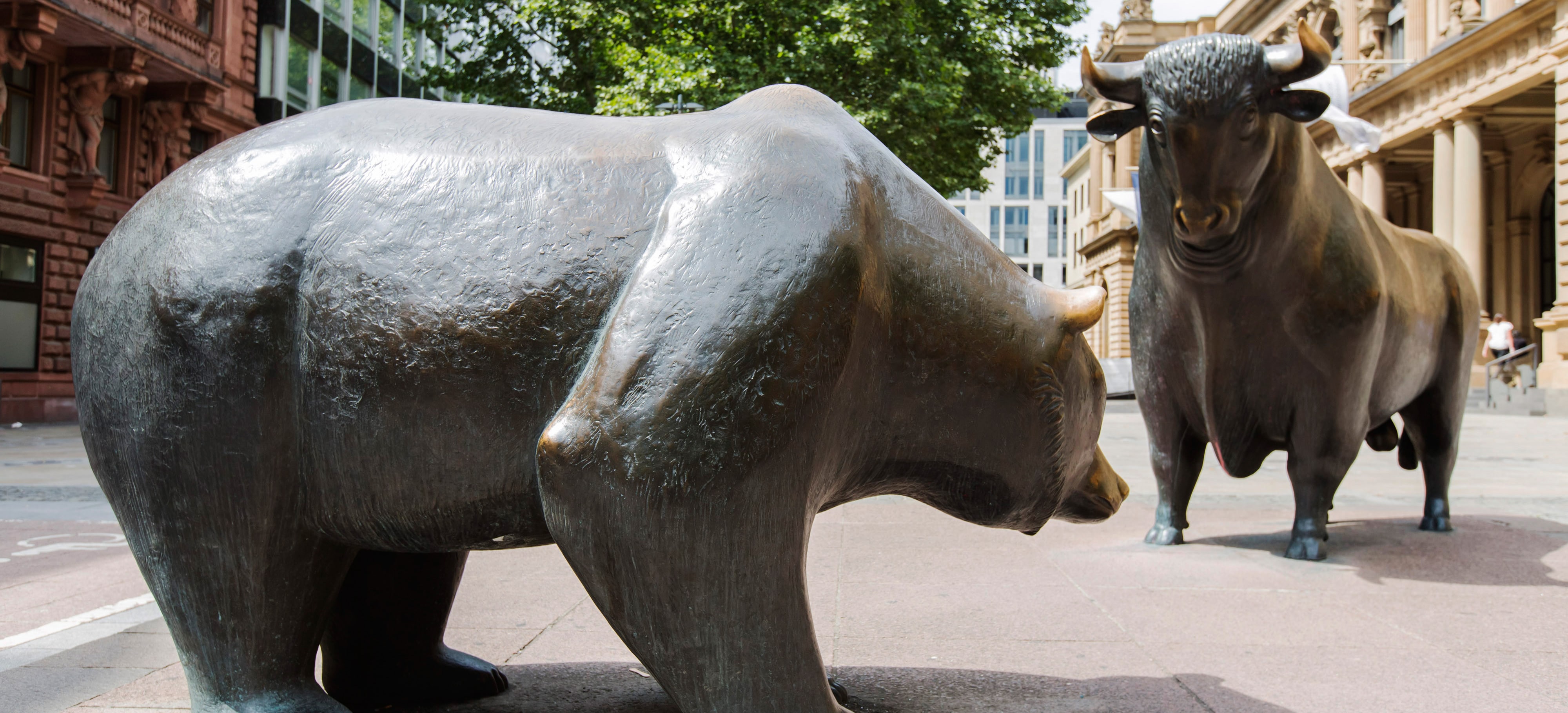In the last two years, cryptocurrency prices have been extremely volatile, even seemingly unpredictable, but exciting nonetheless.
According to Investopedia, "Bitcoin pricing is influenced by factors such as the supply of Bitcoin and market demand for it, the number of competing Cryptocurrencies
Cryptocurrencies
By using cryptography, virtual currencies, known as cryptocurrencies, are nearly counterfeit-proof digital currencies that are built on blockchain technology. Comprised of decentralized networks, blockchain technology is not overseen by a central authority.Therefore, cryptocurrencies function in a decentralized nature which theoretically makes them immune to government interference. The term, cryptocurrency derives from the origin of the encryption techniques that are employed to secure the netw
By using cryptography, virtual currencies, known as cryptocurrencies, are nearly counterfeit-proof digital currencies that are built on blockchain technology. Comprised of decentralized networks, blockchain technology is not overseen by a central authority.Therefore, cryptocurrencies function in a decentralized nature which theoretically makes them immune to government interference. The term, cryptocurrency derives from the origin of the encryption techniques that are employed to secure the netw
Read this Term, and the exchanges it trades on."
However, some may argue that when someone buys Bitcoin on an exchange, they’re buying it from someone who’s selling it, making it a 1:1 transaction balancing supply and demand – yes, this is true, so let’s start there.
Supply and Demand Simplified
Technically speaking, there is always a 1:1 exchange occurring when someone buys or sells their cryptocurrency because it doesn’t just go back to the Blockchain
Blockchain
Blockchain comprises a digital network of blocks with a comprehensive ledger of transactions made in a cryptocurrency such as Bitcoin or other altcoins.One of the signature features of blockchain is that it is maintained across more than one computer. The ledger can be public or private (permissioned.) In this sense, blockchain is immune to the manipulation of data making it not only open but verifiable. Because a blockchain is stored across a network of computers, it is very difficult to tampe
Blockchain comprises a digital network of blocks with a comprehensive ledger of transactions made in a cryptocurrency such as Bitcoin or other altcoins.One of the signature features of blockchain is that it is maintained across more than one computer. The ledger can be public or private (permissioned.) In this sense, blockchain is immune to the manipulation of data making it not only open but verifiable. Because a blockchain is stored across a network of computers, it is very difficult to tampe
Read this Term.
However, market supply and demand is based on how many people want to buy or sell, in an organized fashion called limit orders and market orders. So, for example (and for the sake of keeping things simple), let’s say the current price is $10, and there are two people (Trader A and Trader B) whom each wants to sell 1 BTC, but not at $10.
Trader A sets their sell order at $11 while Trader B sets theirs at $12. This makes the best available price $11 when someone tries to buy 1 Bitcoin at the market price. The exchange will fill market orders at the best available price, causing the current and last traded price to move up to $11.
On the contrary, if there is an eager seller, and traders ready to buy 1 BTC at $9 or $8, the market will fill their sell order at $9, if there are no orders at the current price, resulting in the new price being $9.
In other words, when more people want to buy than sell, the exchange receives a greater amount of buy orders than sell orders, which means the exchange will execute trades at higher prices, thereby causing the price to go up. This process is reversed in a bear market whereby there is a surplus of sell orders relative to buy orders, which causes the price to go down.
In the winter months of 2017, demand for Bitcoin was high – Bitcoin hysteria was pervading the mainstream media, and people all over the world thought it was a one-way street to making capital gains. The massive surge of people desperate to get their hands on this new digital currency combined with a lack of liquidity raised the price from $6,000 up to $20,000 within a few months.
When Bitcoin hit $20,000 in December 2017, Bitcoin market participants were staggered. Not many people knew or understood what cryptocurrencies were, or the market dynamics that underpinned their price movements, and yet, droves of people wanted to be a part of it.
Bitcoin was on everyone’s lips, and the parallel price appreciation encouraged everyone to think that this was the beginning of a magical internet money-making story that would never end.
The biggest factor that was forgotten was how the price was (and currently still is) driven by investors, and not fundamental principles.
In a traditional stock or forex market, prices are driven by both buyers and sellers, with their buying and selling decisions being driven by economic news and/or fundamental factors that (in their view) justify the value of the price they see and whether it should be higher or lower. Bitcoin doesn’t have such fundamentals driving its price dynamics, or at least not yet.
When the price of Bitcoin price reached $20,000, it amounted to an increase of over 200 percent in five weeks, which in the minds of investors was a good month.
The excitement moved from buying Bitcoin to selling it very quickly to turn their investment into a profit. Or as financiers would say, to “crystallize” their gains. Bitcoin investors did this to turn their hypothetical investment into something tangible and physical, which they could touch if they wanted to — or just look at digitally via their online bank account statements.
The reason why the Bitcoin price fell from $20,000 was primarily profit-taking.
Who knows, maybe some investors had hundreds or thousands of Bitcoins from when it was trading at less than $1 and wanted to cash in a portion of their portfolio. Large tranches of sell orders from early adopters could have rapidly sent the market price lower, given the relative lack of buyers available at those high prices – resulting in a knock-on effect on other investors that began to panic sell in an attempt to prevent losses. And because the early adopters bought at such low prices, maybe most have no problem selling at the best available market price.
A New Era of Money vs. A Quick Profit
Since cryptocurrencies have yet to establish a fundamental impact on society, their price action is continually driven by speculative investors.
For example, although BitMex is an internally managed exchange, at the time of writing, it posted $2.32 billion in 24-hour volume. That’s just a small representation of the number of cryptocurrency daily transactions.
As things stand, Bitcoin’s market capitalization is almost $155 billion, while its 24-hour volume is $17.7 billion, according to CoinMarketCap.
However, although many people are so-called “bitcoin advocates for a better future,” there aren’t enough of them to influence the price.
For the time being, given how nascent cryptocurrency trading is, the market will be a speculative game of profit and loss – and a volatile one at that.
This is likely to change if or when Bitcoins (and cryptocurrencies in general) can begin to exert a fundamental influence on the financial system and people’s daily lives.
Until then, prices will go through periods of speculation-induced sharp increases, periods of trading sideways, and periods of sharp decline – with much of the price action driven by herd behavior and speculation.
There may very well come a day when Bitcoin, or another cryptocurrency, becomes the primary global currency used by central banks and which is used as the predominant benchmark to price other assets. If this happens, that is when cryptocurrency prices will stabilize and trend higher, instead of behaving like a rollercoaster.
In the last two years, cryptocurrency prices have been extremely volatile, even seemingly unpredictable, but exciting nonetheless.
According to Investopedia, "Bitcoin pricing is influenced by factors such as the supply of Bitcoin and market demand for it, the number of competing Cryptocurrencies
Cryptocurrencies
By using cryptography, virtual currencies, known as cryptocurrencies, are nearly counterfeit-proof digital currencies that are built on blockchain technology. Comprised of decentralized networks, blockchain technology is not overseen by a central authority.Therefore, cryptocurrencies function in a decentralized nature which theoretically makes them immune to government interference. The term, cryptocurrency derives from the origin of the encryption techniques that are employed to secure the netw
By using cryptography, virtual currencies, known as cryptocurrencies, are nearly counterfeit-proof digital currencies that are built on blockchain technology. Comprised of decentralized networks, blockchain technology is not overseen by a central authority.Therefore, cryptocurrencies function in a decentralized nature which theoretically makes them immune to government interference. The term, cryptocurrency derives from the origin of the encryption techniques that are employed to secure the netw
Read this Term, and the exchanges it trades on."
However, some may argue that when someone buys Bitcoin on an exchange, they’re buying it from someone who’s selling it, making it a 1:1 transaction balancing supply and demand – yes, this is true, so let’s start there.
Supply and Demand Simplified
Technically speaking, there is always a 1:1 exchange occurring when someone buys or sells their cryptocurrency because it doesn’t just go back to the Blockchain
Blockchain
Blockchain comprises a digital network of blocks with a comprehensive ledger of transactions made in a cryptocurrency such as Bitcoin or other altcoins.One of the signature features of blockchain is that it is maintained across more than one computer. The ledger can be public or private (permissioned.) In this sense, blockchain is immune to the manipulation of data making it not only open but verifiable. Because a blockchain is stored across a network of computers, it is very difficult to tampe
Blockchain comprises a digital network of blocks with a comprehensive ledger of transactions made in a cryptocurrency such as Bitcoin or other altcoins.One of the signature features of blockchain is that it is maintained across more than one computer. The ledger can be public or private (permissioned.) In this sense, blockchain is immune to the manipulation of data making it not only open but verifiable. Because a blockchain is stored across a network of computers, it is very difficult to tampe
Read this Term.
However, market supply and demand is based on how many people want to buy or sell, in an organized fashion called limit orders and market orders. So, for example (and for the sake of keeping things simple), let’s say the current price is $10, and there are two people (Trader A and Trader B) whom each wants to sell 1 BTC, but not at $10.
Trader A sets their sell order at $11 while Trader B sets theirs at $12. This makes the best available price $11 when someone tries to buy 1 Bitcoin at the market price. The exchange will fill market orders at the best available price, causing the current and last traded price to move up to $11.
On the contrary, if there is an eager seller, and traders ready to buy 1 BTC at $9 or $8, the market will fill their sell order at $9, if there are no orders at the current price, resulting in the new price being $9.
In other words, when more people want to buy than sell, the exchange receives a greater amount of buy orders than sell orders, which means the exchange will execute trades at higher prices, thereby causing the price to go up. This process is reversed in a bear market whereby there is a surplus of sell orders relative to buy orders, which causes the price to go down.
In the winter months of 2017, demand for Bitcoin was high – Bitcoin hysteria was pervading the mainstream media, and people all over the world thought it was a one-way street to making capital gains. The massive surge of people desperate to get their hands on this new digital currency combined with a lack of liquidity raised the price from $6,000 up to $20,000 within a few months.
When Bitcoin hit $20,000 in December 2017, Bitcoin market participants were staggered. Not many people knew or understood what cryptocurrencies were, or the market dynamics that underpinned their price movements, and yet, droves of people wanted to be a part of it.
Bitcoin was on everyone’s lips, and the parallel price appreciation encouraged everyone to think that this was the beginning of a magical internet money-making story that would never end.
The biggest factor that was forgotten was how the price was (and currently still is) driven by investors, and not fundamental principles.
In a traditional stock or forex market, prices are driven by both buyers and sellers, with their buying and selling decisions being driven by economic news and/or fundamental factors that (in their view) justify the value of the price they see and whether it should be higher or lower. Bitcoin doesn’t have such fundamentals driving its price dynamics, or at least not yet.
When the price of Bitcoin price reached $20,000, it amounted to an increase of over 200 percent in five weeks, which in the minds of investors was a good month.
The excitement moved from buying Bitcoin to selling it very quickly to turn their investment into a profit. Or as financiers would say, to “crystallize” their gains. Bitcoin investors did this to turn their hypothetical investment into something tangible and physical, which they could touch if they wanted to — or just look at digitally via their online bank account statements.
The reason why the Bitcoin price fell from $20,000 was primarily profit-taking.
Who knows, maybe some investors had hundreds or thousands of Bitcoins from when it was trading at less than $1 and wanted to cash in a portion of their portfolio. Large tranches of sell orders from early adopters could have rapidly sent the market price lower, given the relative lack of buyers available at those high prices – resulting in a knock-on effect on other investors that began to panic sell in an attempt to prevent losses. And because the early adopters bought at such low prices, maybe most have no problem selling at the best available market price.
A New Era of Money vs. A Quick Profit
Since cryptocurrencies have yet to establish a fundamental impact on society, their price action is continually driven by speculative investors.
For example, although BitMex is an internally managed exchange, at the time of writing, it posted $2.32 billion in 24-hour volume. That’s just a small representation of the number of cryptocurrency daily transactions.
As things stand, Bitcoin’s market capitalization is almost $155 billion, while its 24-hour volume is $17.7 billion, according to CoinMarketCap.
However, although many people are so-called “bitcoin advocates for a better future,” there aren’t enough of them to influence the price.
For the time being, given how nascent cryptocurrency trading is, the market will be a speculative game of profit and loss – and a volatile one at that.
This is likely to change if or when Bitcoins (and cryptocurrencies in general) can begin to exert a fundamental influence on the financial system and people’s daily lives.
Until then, prices will go through periods of speculation-induced sharp increases, periods of trading sideways, and periods of sharp decline – with much of the price action driven by herd behavior and speculation.
There may very well come a day when Bitcoin, or another cryptocurrency, becomes the primary global currency used by central banks and which is used as the predominant benchmark to price other assets. If this happens, that is when cryptocurrency prices will stabilize and trend higher, instead of behaving like a rollercoaster.






















